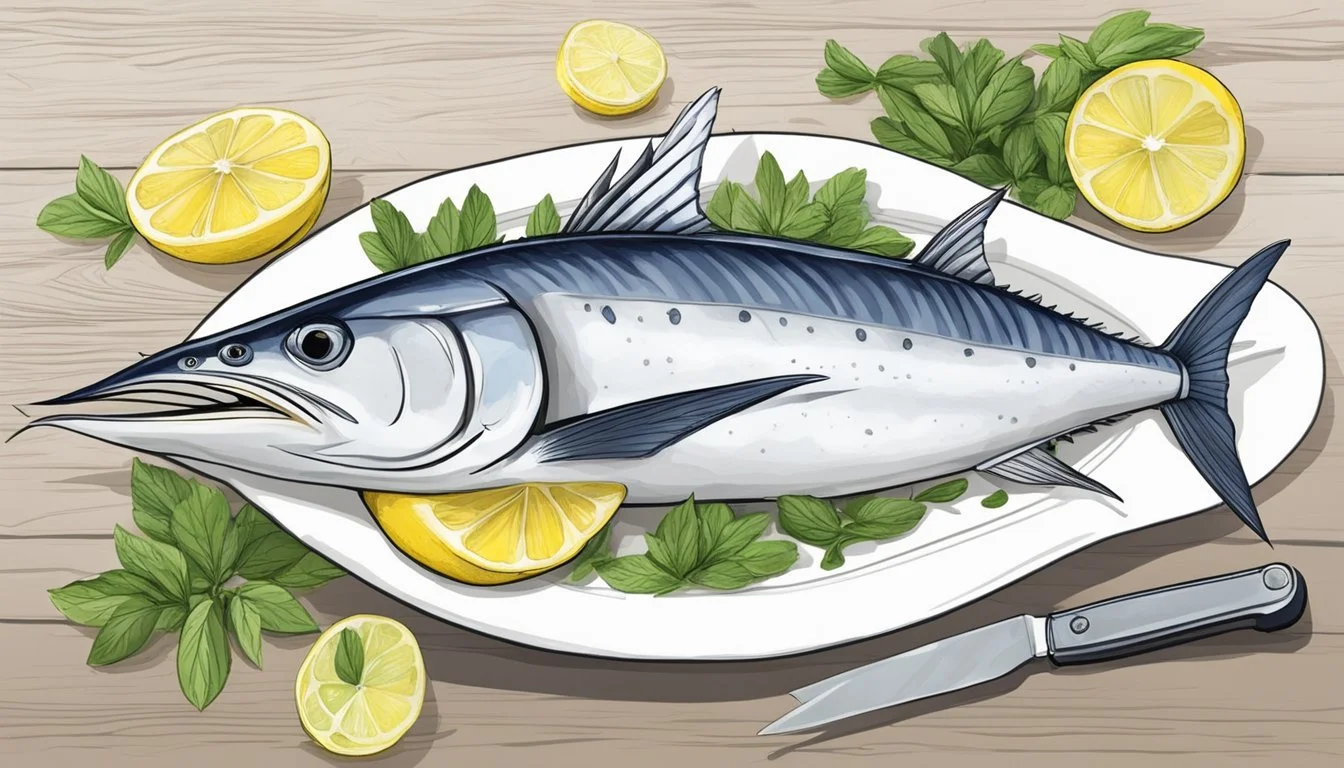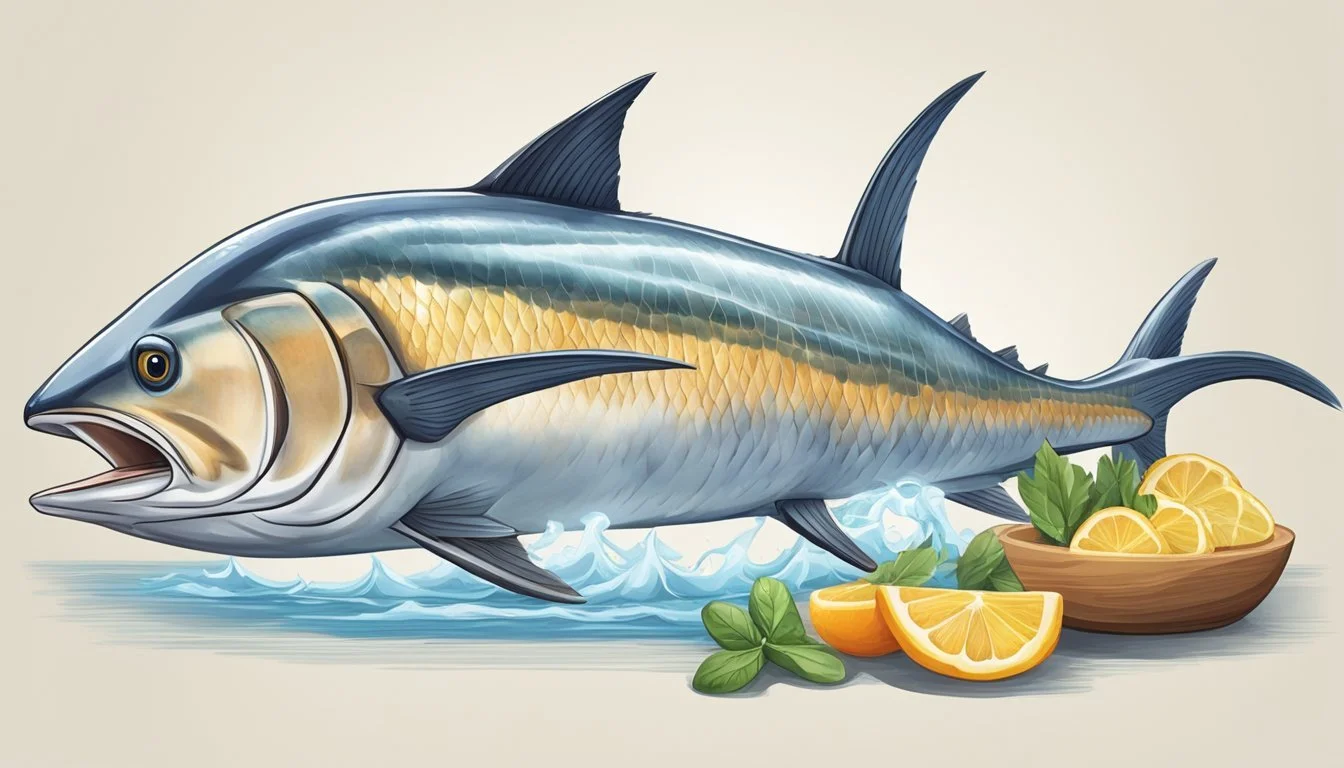How to Eat Xiphias:
Expert Tips on Enjoying Swordfish
Swordfish, known scientifically as Xiphias gladius, are a species of large marine fish easily recognized by their long, flat bills that resemble a sword. This distinctive feature is not just for show; it plays a vital role in their hunting strategy in the vast oceans where they reside. Highly migratory, these fish traverse tropical and temperate waters of the Atlantic, and their elongated, round bodies are equipped to be the predators of the sea, efficiently consuming their prey in their solitary swims.
When it comes to culinary preparation, swordfish is a versatile and popular choice around the world. Its firm, meaty texture makes it an excellent candidate for various cooking methods, including grilling, broiling, or pan-frying. In the kitchen, swordfish steaks absorb flavors well and, when cooked properly, yield a moist and rich result. Though devoid of teeth and scales in adulthood, their flesh has become a favored dish, offering a nutritional profile that includes essential Omega-3 fatty acids beneficial to human health.
Nutritionists often recommend consuming swordfish in moderation due to its high-quality protein content and potential benefits to heart health. However, due to concerns about mercury levels, portion size and frequency of consumption should be carefully considered, especially for certain populations. When enjoyed responsibly, swordfish provides not only a gastronomic delight but also contributes to a balanced diet.
Swordfish Basics
Swordfish, also known as Xiphias gladius, are a fascinating species, boasting a unique bill and being highly valued in culinary circles. They are large predators found in the open ocean, and their lifecycle includes rapid growth and extensive migrations.
Anatomical Features
Swordfish are easily recognized by their long, flat, pointed bills, resembling swords, which they use to slash and stun prey. They have large eyes for superior vision and, by adulthood, have lost all teeth and scales. Their skin is smooth, which reduces water resistance as they swim.
Species Classification
Belonging to the order Actinopterygii, swordfish are a type of billfish categorized in the family Xiphiidae. They are the sole members of their genus, Xiphias.
Habitat and Range
They are highly migratory and inhabit various layers of the ocean, from the surface to the depths. Their range is expansive, encompassing the Atlantic, Pacific, and Indian Oceans, where they favor tropical and temperate waters.
Adult Size and Weight
An adult swordfish can grow to 177 inches long, with the length and weight of the fish varying considerably. A typical swordfish can weigh between 200-600 pounds, although larger specimens have been recorded.
Growth and Lifespan
Swordfishes grow rapidly in their early years and reach full maturity by the age of five. They have a relatively short lifespan of around 15 years.
Diet and Predatory Behavior
These carnivorous predatory fish mostly feed on a diet consisting of smaller fish and cephalopods like squid. Their bill is used to impale or maim fast-moving prey.
Reproductive Cycle
During spawning, female swordfish release millions of eggs into the water where they are fertilized by males. Eggs are released multiple times throughout the breeding season, with females capable of spawning every few days.
Conservation Status
Swordfish are not currently listed on the IUCN Red List; however, overfishing remains a concern. Various regulations and conservation efforts are in place to manage swordfish populations and ensure the species does not become threatened.
Culinary Profile of Swordfish
Swordfish, a highly prized seafood, is known for its firm texture and mild taste. It provides a versatile canvas for a variety of culinary applications, from grilling to baking.
Nutritional Value
Swordfish is a rich source of high-quality protein, with one serving offering around 20 grams. It's a healthy food choice, containing essential nutrients like potassium and omega-3 fatty acids. However, one should be mindful of its mercury content, as it is a predatory fish and higher up on the food chain.
Nutrient Amount in a 3-oz serving Calories 146 Protein 20g Fat 7g Potassium 256mg Mercury Varies by catch location
Texture and Flavor
The texture of swordfish is often compared to that of a steak, dense and meaty. Its flavor is mild, which allows it to take on the taste of marinades and seasonings effectively, making it an ideal choice for those who usually prefer a less "fishy" tasting seafood.
Preparation Varieties
Swordfish can be served as steaks or fillets. The thick cuts lend themselves well to grilling and other cooking methods that benefit from the fish's meaty quality.
Cooking Techniques
Common cooking techniques include grilling, broiling, baking, and smoking. Grilling highlights swordfish's natural flavor, while broiling can quickly cook the fish with a desirable texture. Baking is another healthy option that retains the moisture and subtlety of the fish.
Grilling: 5-7 minutes per side over medium-high heat.
Broiling: 7-10 minutes total in a 450°F oven.
Baking: Time varies based on thickness, retaining moisture and flavor.
Smoking: Infuses a smoky flavor, timing varies based on the setup.
Culinary Uses
Swordfish's firmness allows it to stand up to bold flavors and heavy marinades. It's often served in thick cuts like steaks and does well with a simple seasoning of herbs, salt, and pepper, or with more complex flavor profiles. It’s an adaptable option in numerous recipes, from Mediterranean to Asian-inspired dishes.
Environmental and Ethical Considerations
When eating swordfish, it's important to consider the species' environmental status and the ethical impact of fishing practices. These factors can influence not only the health of the oceans but also the safety and sustainability of the food on our plates.
Impact of Overfishing
Overfishing has posed a major threat to swordfish populations, especially in the past. North Atlantic swordfish were significantly depleted by the late 1990s, falling to just 58 percent of the target population level. This not only affects the species' survival but also the balance of marine ecosystems, as swordfish play a critical role as apex predators.
Mercury Contamination
Mercury can accumulate in predatory fish, and swordfish are no exception. The consumption of swordfish may lead to exposure to methylmercury, a toxic compound that poses health risks, especially for pregnant women and children. The FDA advises these groups to avoid fish with high mercury content due to risks like developmental delays and even cancer.
Conservation Efforts
Conservation measures have been critical in recovering swordfish stocks. The IUCN Red List assesses the conservation status of species, and it has recognized efforts that led to the rebound of the North Atlantic swordfish stock. International plans and management procedures have been key in making North Atlantic swordfish one of the more sustainable choices for consumers.
Responsible Fishing Practices
Fishing methods like pelagic longlines have been regulated to minimize bycatch, which is the unintentional capture of non-target species. Recreational fishermen are also encouraged to adopt responsible fishing practices to reduce harmful impacts on swordfish populations and other marine life.
Buying and Sustainability
When purchasing swordfish, consumers should look for certification labels from organizations like the Marine Stewardship Council - MSC. These labels indicate that the fish comes from a sustainable fishery and was caught using methods that support eco-friendly practices. The market and food industry have a role to play in promoting and providing access to sustainable seafood options.
Swordfish in Culture and History
Swordfish, with their distinctive long, flat bills, have held a place of importance across various cultures and historic periods, particularly as a source of fascination and a challenge for fishermen due to their elusive nature and impressive size.
Historical Significance
The swordfish has been a significant part of maritime culture since ancient times, particularly in the Mediterranean Sea region. In cultures around the Mediterranean, including Italy, depictions of swordfish can be found in art and literature, signifying the importance of the sea in daily life and sustenance. The Greeks and Romans admired the swordfish, or Xiphias, which translates from Greek as 'sword', for its strength and speed.
Moving to the other side of the world, in Australia, the swordfish is considered an esteemed game fish, much like the marlin. Named the broadbill swordfish, it is highly sought after by sports fishermen, both for its challenging capture and its culinary value. In Australia, sport fishing for swordfish has become a significant part of the recreational fishing industry, contributing to cultural fishing practices and tourism.
Throughout history, swordfish have been not only a food source but also a symbol of power due to their formidable appearance. They are often confused with marlins, but unlike marlins, swordfish have a flatter bill and lack body scales as adults. This distinctive biology has made them a subject of interest and reverence in various cultures around the world.






